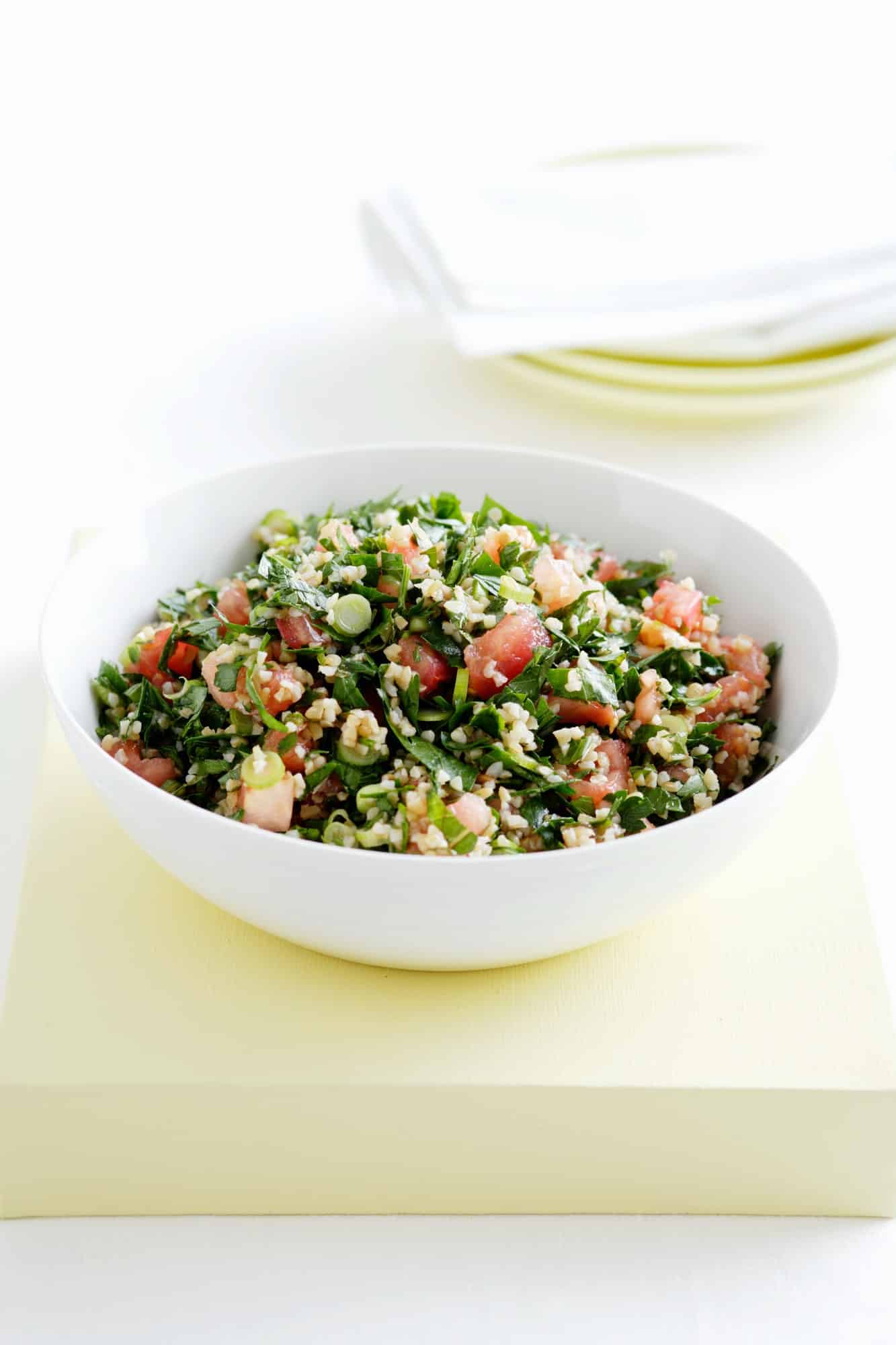When it comes to fresh, delicious, and nutrient-rich salads, few can compete with traditional Lebanese Tabbouleh. This satisfying dish combines the earthy goodness of bulgur wheat with the bold flavors of fresh herbs, crisp vegetables, tart lemon juice, and rich olive oil. But what’s the secret to making an authentic tabouli that truly impresses? Let’s break it down.
The Basics: Understanding the Core Ingredients
To start, you need to understand the core ingredients that make up a tabouleh. These are bulgur, parsley, mint, tomatoes, lemon juice, and olive oil. Each ingredient plays a crucial role in the final dish.
A lire en complément : How Can You Make a Perfect Espresso Martini with Freshly Brewed Espresso?
Bulgur wheat
Bulgur wheat is a type of whole grain that has been cracked and partially pre-cooked. It’s a staple in Middle Eastern cuisine and is what sets tabouli apart from other salads. It has a mild, nutty flavor and a pleasing chewy texture that adds substance to the salad.
Fresh Parsley and Mint
The heart of the tabouli is its abundance of fresh herbs. Parsley and mint are used in generous amounts, providing a vibrant green color and a distinctive, fresh flavor. While other recipes might use these herbs sparingly, in tabouli, they take center stage.
Lire également : How Can You Bake a Classic English Victoria Sponge Cake with Fresh Berries?
Tomatoes
Fresh, ripe tomatoes add a juicy sweetness to the tabouli, complementing the tartness of the lemon juice and the savory notes of the bulgur. Choose the freshest, ripest tomatoes you can find, as their quality will significantly impact the final taste.
Lemon Juice and Olive Oil
The dressing for a tabouli is simple but effective. Freshly squeezed lemon juice provides a tart, refreshing acidity that brightens the other flavors. Olive oil lends a luxurious, silky mouthfeel, and its characteristic fruity notes further enrich the salad.
Step by Step: Making an Authentic Lebanese Tabbouleh
Now that we’ve covered the ingredients, it’s time to dive into the recipe itself. Making a tabouli isn’t complicated, but it does require careful attention to detail and a dedication to using the freshest ingredients.
Preparing the Bulgur
Start by preparing the bulgur. This usually involves soaking it in hot water for about 30 minutes until it softens. Some recipes call for cooking the bulgur, but soaking preserves its chewy texture and prevents it from becoming mushy.
Chopping the Herbs and Tomatoes
While the bulgur is soaking, you can turn your attention to the herbs and tomatoes. They need to be chopped very finely. This time-consuming task is one of the keys to an authentic tabouli. The extra effort ensures that each bite delivers a perfect blend of flavors.
Mixing the Salad
Once the bulgur is ready and the other ingredients are chopped, it’s time to mix the salad. Add the bulgur, herbs, and tomatoes to a large bowl. Then, whisk together the lemon juice and olive oil and pour it over the salad. Toss everything together until it’s well combined.
The Secret: What Makes a Tabbouleh Truly Authentic?
You may be wondering what the ‘secret’ to an authentic tabouli is. After all, the ingredients and steps seem straightforward enough. The secret, though, lies not in any hidden ingredient or unique technique, but in the quality of the ingredients and the care with which the salad is prepared.
The Importance of Freshness
A truly authentic tabouli relies on the absolute freshness of its ingredients. The bulgur should be fresh, not stale or rancid. The herbs and tomatoes should be as fresh as possible, ideally picked the same day. The lemon juice should be freshly squeezed, and the olive oil should be a high-quality, extra virgin variety.
The Care in Preparation
Additionally, authentic tabouli requires careful, considered preparation. The bulgur should be soaked just until it’s tender, not mushy. The herbs and tomatoes should be finely chopped, not roughly cut or processed in a food processor. And the salad should be gently tossed, not aggressively mixed, to prevent the ingredients from becoming bruised or squashed.
Enjoying Your Tabbouleh: Serving Suggestions and Pairings
Once your tabouli is prepared, it’s time to enjoy it. Tabbouleh can be eaten on its own, as a refreshing and filling salad. But it also pairs well with a variety of other dishes.
As Part of a Mezze Platter
Tabbouleh is traditionally served as part of a mezze platter, alongside dishes like hummus, baba ganoush, and stuffed grape leaves. It provides a fresh, bright contrast to these richer dishes.
With Grilled Meat or Fish
The bold flavors of tabouli also make it a great accompaniment to grilled meats or fish. The tartness of the lemon juice and the freshness of the herbs can cut through the richness of the meat, providing a balanced and satisfying meal.
So, the secret to an authentic Lebanese tabouli lies not in any hidden ingredient or unique technique, but in the quality of the ingredients and the care with which the salad is prepared. With this knowledge in hand, you’re now ready to make your own authentic Lebanese tabouli. Enjoy the process, savor the flavors, and most importantly, share the result with people you love.
The Extra Touches: Adding a Personal Spin to Your Lebanese Tabbouleh
While the traditional ingredients of a Lebanese tabbouleh salad are non-negotiable for authenticity, there is room for individual flair. Once you’ve mastered the basics, consider adding a personal touch to make your tabbouleh truly unique.
Add Extra Crunch
Crunchy elements can add another layer of texture to your tabbouleh salad. Finely chopped cucumber or radish can make your tabbouleh even more refreshing. Just remember to add them last, right before serving, to maintain their crunch.
Experiment with Herbs
While curly parsley and fresh mint are traditional, there’s no harm in adding other herbs to your tabbouleh. Flat leaf parsley or even a small amount of fresh basil can introduce new flavors without straying too far from tradition.
Incorporate a Touch of Spice
A pinch of spice can transform your tabbouleh. Consider adding a bit of finely chopped green chili or a sprinkle of ground cumin for a Middle Eastern twist. But remember, the spice should highlight, not overpower, the fresh flavors of your tabbouleh salad.
Play with Bulgar Wheat Varieties
Authentic tabouli calls for fine bulgur. However, there are different varieties of bulgur wheat available which you might want to experiment with. Coarser bulgur will give your salad a different texture, while red bulgur can add a pop of color.
Honoring Tradition: The Essence of a True Lebanese Tabbouleh
The art of making an authentic Lebanese tabbouleh lies in honoring tradition while adding personal nuance to the dish. While the essence of tabbouleh is simple, it’s the quality of ingredients and the care in preparation that sets it apart.
The Power of Simplicity
A true Lebanese tabbouleh embraces simplicity. Each element – from the tart lemon juice to the nuttiness of the bulgur wheat, the freshness of the parsley and mint, to the silkiness of the olive oil – has a purpose. The flavors are balanced and harmonious, with no single ingredient overpowering the others.
The Art of Knife Skills
Precision in chopping is crucial to the texture and taste of your tabbouleh. Using a sharp knife, the herbs and tomatoes should be finely chopped, not shredded or mashed, to maintain their integrity and fresh taste. Achieving this requires patience and practice, but it’s worth the effort.
The Role of Time
Lastly, letting your tabbouleh rest before serving is vital. This allows the flavors to meld together, with the bulgur soaking up the lemon juice and olive oil, and the herbs infusing the salad with their refreshing aroma.
Overall, making an authentic Lebanese tabbouleh is a journey. It’s about understanding the essence of each ingredient, mastering the techniques, and adding your personal touch. It’s a simple dish, but one that carries the rich heritage of Lebanese cuisine. The true secret lies in the freshness of the ingredients, the careful preparation, and the love with which it is shared.











